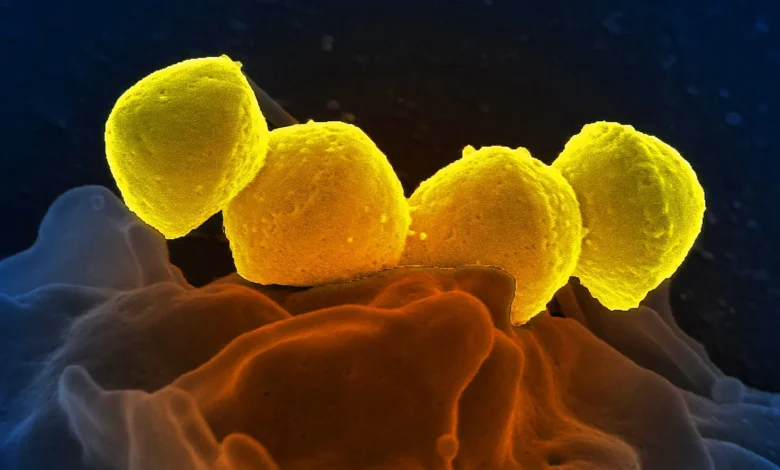
A record number of cases of streptococcal toxic shock syndrome (STSS) in Japan this year has focused attention on the rare and potentially deadly bacterial infection. There have been 1,019 cases of STSS in the first six months of 2024, surpassing the total number recorded last year in the country.
Japan’s National Institute of Infectious Diseases warned of a rise in cases in March, after 77 deaths from the illness were recorded. The majority of the cases at that time were of people above the age of 50.
Subscribe to The Post Most newsletter for the most important and interesting stories from The Washington Post.
The United States reported 145 cases of STSS in 2021, according to the latest data available from the U.S. Centers for Disease Control and Prevention.
What is streptococcal toxic shock syndrome, or STSS?
Streptococcal toxic shock syndrome is a severe illness caused when Group A Streptococcus bacteria spreads into the blood and deep tissues, according to the CDC.
Group A Strep (GAS) is a common bacteria found in the throat and on the skin. The vast majority of GAS infections cause mild and common illnesses, such as strep throat, according to the CDC. Life-threatening disease like STSS may occur when bacteria get into areas where bacteria usually are not found, such as blood or muscle.
GAS in general often causes sore throat and skin infections, said Céline Gounder, editor-at-large for public health at KFF Health News and an infectious-disease specialist and epidemiologist at NYU and Bellevue Hospital.
Blood, lung and “flesh-eating” infections are “less common,” she added.
Open wounds or sores, diabetes and alcohol usage are factors that can increase the risk of contracting STSS, according to the CDC. Three out of 10 STSS patients are likely to die, the agency estimates.
Risk factors include having recently had surgery, or having had a varicella virus such as the chickenpox or shingles, the CDC said, adding that STSS is more common in those over 65.
STSS is “highly associated” with necrotizing fasciitis, a flesh-eating form of Group A Strep bacteria that STSS can co-occur with, said Andrew Steer, director of infection, immunity and global health at Murdoch Children’s Research Institute in Melbourne, Australia.
Necrotizing fasciitis can destroy muscles, skin and the underlying tissues, according to Penn Medicine, which is affiliated with the University of Pennsylvania.
What are symptoms of STSS?
Symptoms of STSS start with fever, chills, muscle aches, nausea and vomiting, according to the CDC.
Steer said there are often no prior warning signs. “You tend to be well, and then become acutely quite sick,” he said, adding that a sunburn-like rash could also be one of the first indications of infection.
Within 24 to 48 hours, blood pressure drops, followed by organ failure and a rapid heart rate and breathing, according to the CDC. It is vital to go to a hospital as soon as possible.
Steer added that, although a sore throat is often what comes to mind when people think of a Strep A infection, STSS is a different iteration of the disease, caused by the same bacterial species. “It’s essentially one or the other,” he said.
How is STSS treated?
STSS is treated with antibiotics. Patients often also need intravenous fluids, interventions to treat organ failure, and surgery to remove infected tissue, according to the CDC.
There is no vaccine for Group A Strep infections: Steer is among the scientists working globally on developing one, which he hopes could be available within “5 to 10 years.”
What is causing the outbreak in Japan?
The reasons for the rise in cases are not clear, Japan’s Health Ministry said this month. The relaxation of coronavirus measures could be a contributing factor behind the rise in the number of patients of streptococcal pharyngitis, the ministry said.
This trend is not limited to Japan, the ministry’s statement said, and added that it was safe to travel to the country. It advised following hand hygiene, cough etiquette and cleaning wounds to prevent infections.
Steer said the cases in Japan should be seen in the context of a rise in Group A Strep infections of various kinds around the world after the pandemic. That could be because while people were taking precautions to avoid catching covid, they also avoided other diseases, lowering immunity.
Should you worry?
STSS is rare, and has already had a long-term global presence.
Steer said that “we’ve had streptococcal toxic shock syndrome and invasive strep A infection in the U.S. for decades and decades and decades, hundreds of years.”
“It’s still an uncommon infection, but the community and doctors should be aware that there is an increase in the number of cases,” he said, advising keeping an eye out for symptoms.




